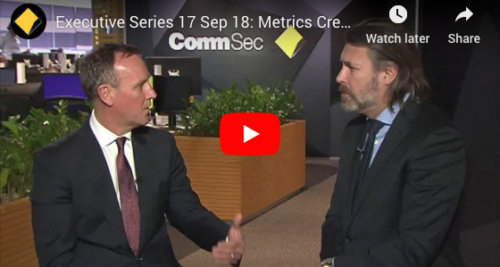Harnessing capital structure as a crisis buffer
With many income investments no longer offering the downside protection they once did, nestegg has taken a look at an alternative form of investment: corporate loans.
According to Metrics Credit Partners’ managing partner, Andrew Lockhart, investors of all sorts should currently be revisiting and gaining a better understanding of where investments sit in the capital structure, and the roles that they can and can’t play in generating returns.
Investments that are senior in a company in a company’s capital structure and rank ahead of equity will result “in less volatility and lower correlation to equity markets”, Mr Lockhart said.
Giving an example, the managing director raised how “regardless of conditions in equity markets, Australian corporates still have to borrow and refinance their loans and continue to pay interest on debt owing”.
Corporate loans are lower down the risk spectrum than growth assets such as equities because they come with a range of embedded protections, he outlined, explaining that they are generally secured by the borrower’s assets, and lenders are paid before equity holders in the event of business insolvency.
Corporate loans are made to businesses of scale for a specific purpose – whether it be working capital, real estate, capital expenditure or acquisitions.
Due to nature of such loans, they can provide investment exposure across a range of industries – from industrials to consumer staples, healthcare, IT and commercial real estate.
“As such, an investment in defensive asset classes such as corporate loans have historically provided an important source of downside protection and attractive alternative sources of income in previous downturns,” he stated.
And while preserving capital is a key priority for pre-retirees and retirees alike in a downturn such as the COVID-19 crisis, Mr Lockhart also emphasised the ability of corporate loans to provide an important source of income.
This is derived from the interest that corporate borrowers pay, he said, and can offer “attractive income returns” due to being slightly higher up the risk curve than government bonds.
The subset of fixed income generated from interest payable and fees is classified as a defensive investment, as its structure naturally contains embedded protections such as covenants, controls and security over the underlying asset.
“For those investors who require liquidity, an investment in an ASX-listed fund providing exposure to a diversified corporate loan portfolio can provide daily entry and exit – with income paid monthly,” Mr Lockhart offered.
He added that corporate loss rates are low, averaging just 0.32 per cent over the past 10 years.
“With the fall and continued volatility in equities markets, we believe corporate loans warrant a closer look for investors seeking downside protection,” the managing partner concluded.
Grace Ormsby, nestegg – 1 May 2020
Other News
Metrics Innovate Reconciliation Action Plan
We are proud to share our second Reconciliation Action Plan (RAP), reaffirming our commitment to truth, healing and unity. We…
Metrics response to ASIC’s report on Advancing Australia’s Evolving Capital Markets
Attributable to Metrics Group CEO and Managing Partner, Andrew Lockhart: Metrics Credit Partners (“Metrics”) welcomes ASIC’s roadmap to promote strong,…
INSIGHTS
MCP Income Opportunities Trust (MOT) lists on ASX
Sydney, 29 April 2019: The Trust Company (RE Services) Limited (ABN 45 003 278 831) (Responsible Entity) is the responsible…
MCP Master Income Trust wins Lonsec Listed Fund Award
The award came a year after MXT was listed on the Australian Securities Exchange






